Your Orchid Keeps Dying? Here’s How to Finally Get It to Rebloom
Let’s be honest, the first orchid you get is usually a beautiful gift. It sits on your desk or kitchen counter looking perfect, and you feel like a great plant parent. The tag says to water it with an ice cube, so you do. And then, slowly but surely, it starts to go downhill. The flowers drop, the leaves get yellow and floppy, and the roots turn to mush. Sound familiar?
In this article
I’ve been there. It took me years of working in nurseries, talking to seasoned growers, and, frankly, sending a few plants to the great compost pile in the sky before I cracked the code. Orchids don’t play by the same rules as your other houseplants. They have their own language, and learning to understand it is the real secret to getting them to bloom again and again.
This isn’t about quick hacks. It’s about understanding the ‘why’ behind the ‘how’ so you can build a confident partnership with your plant. The reward—a fresh spike of gorgeous blooms—is so worth the effort.
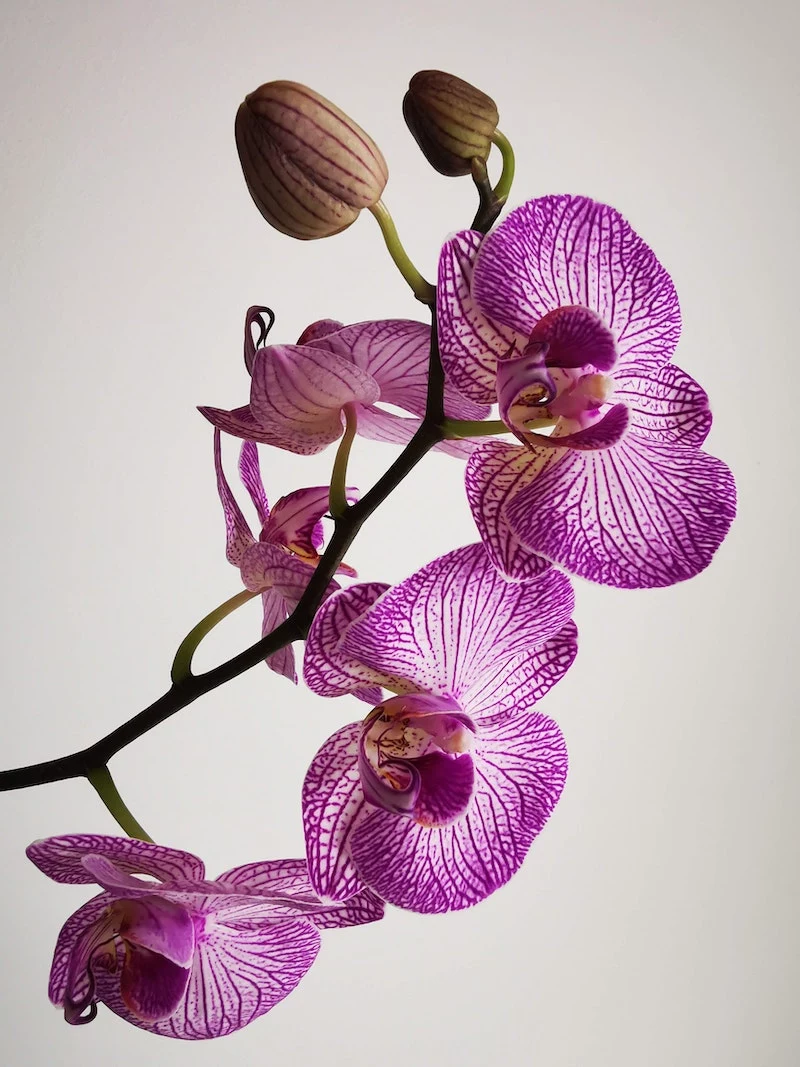
Your Orchid Starter Kit: What You Actually Need
Before we dive in, let’s talk about what you should have on hand. You don’t need a ton of fancy gear, but having the right stuff makes all the difference. Think of it as your orchid first-aid kit.
- Good Quality Orchid Mix: This is non-negotiable. Look for a mix that’s primarily fir bark. You can grab a basic bag at a big box store like Home Depot or Lowe’s for about $10, but if you want the really good stuff that lasts longer, I get mine from online orchid suppliers. A good-sized bag will run you between $15 and $20 and is enough for several repottings.
- A Balanced Liquid Fertilizer: Look for one with a balanced ratio like 20-20-20. A bottle will cost you about $10-$15 but will literally last for years since you’re diluting it so much.
- 70% Isopropyl Alcohol: Your best friend for dealing with pests. A cheap bottle from any drugstore is perfect.
- A Clear Plastic Pot: Orchids often come in them, and for good reason. Being able to see the roots is the easiest way to know what’s going on with your plant’s health. You can always tuck this clear pot inside a more decorative one.
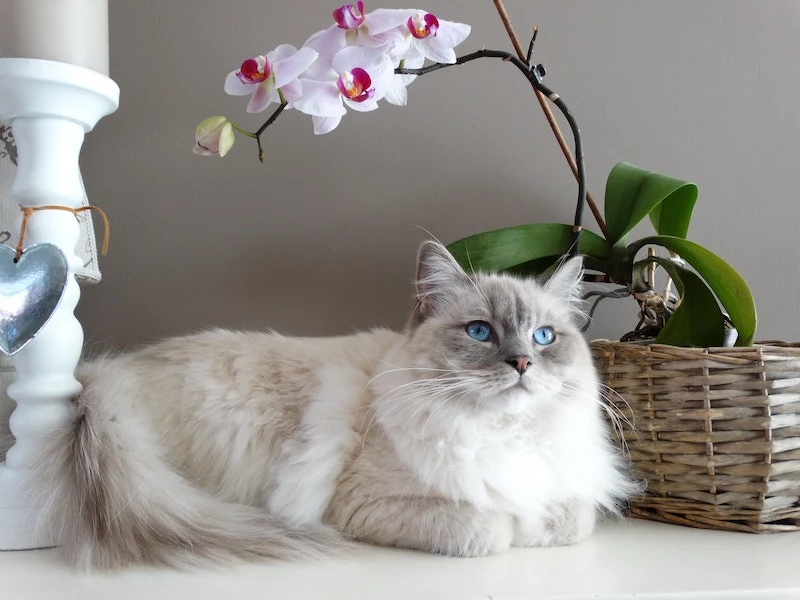
The Big Secret: Orchids Aren’t Normal Plants
To keep an orchid alive, you have to forget almost everything you know about traditional houseplants. The common Phalaenopsis, or ‘moth orchid,’ is an epiphyte. In the wild, this means it doesn’t grow in soil. It grows on trees, clinging to the bark with its roots out in the open air. Its whole biology is built for this treetop lifestyle.
Those thick, silvery roots are incredible. That coating is called velamen, and it acts like a high-tech sponge, rapidly soaking up rainwater and nutrients. Oh yeah, and the roots also perform photosynthesis, which is why the pros use clear pots—the roots need light! When you pack an orchid into dense potting soil, you’re essentially suffocating it. The velamen can’t breathe, and the constant moisture causes rot. This is, without a doubt, the number one reason beginner orchids fail.
So your job is to mimic its natural home: a tree in a rainforest. This means cycles of a good drenching followed by a period of drying out, all while getting dappled, indirect sunlight. Direct sun will scorch the leaves, leaving behind nasty bleached or black spots.
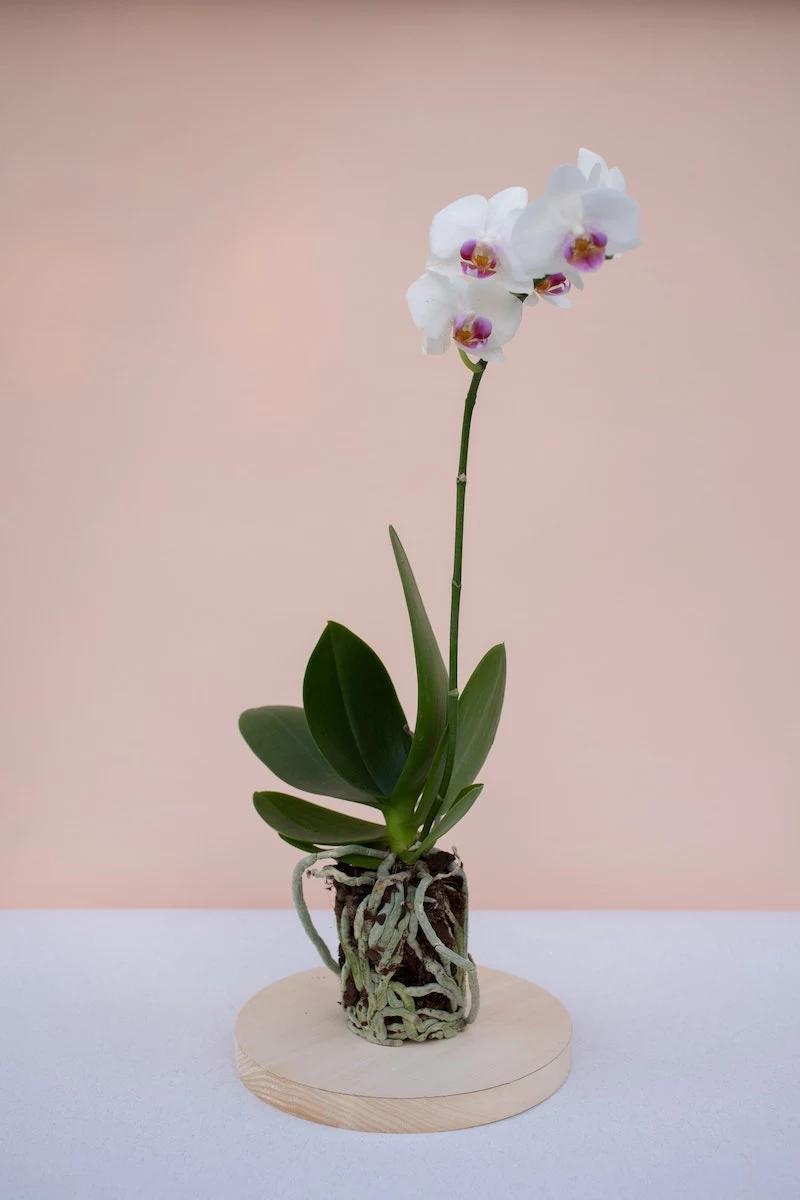
Mastering the Basics: Water, Light, and Food
In a professional greenhouse, consistency is key. We use proven methods that you can easily use at home to get great results.
How to Water (and Please, No Ice Cubes)
First things first: throw away any advice about using ice cubes. An ice cube delivers a tiny, shocking dose of cold water that can damage the roots and never properly saturates the potting mix. Instead, you should only water when the plant actually needs it.
How do you know when it’s time? Simple. Look at the roots inside the clear pot. If they’re bright green and plump, it’s hydrated. If they’re a silvery-white or pale green, it’s thirsty. The other pro trick is the weight test.
Quick Tip: The next time you water your orchid, pick it up and feel how heavy it is. Now you have a baseline. In a week or so, pick it up again. That lighter feel is your signal that it’s time to water. You’ll get the hang of it fast!
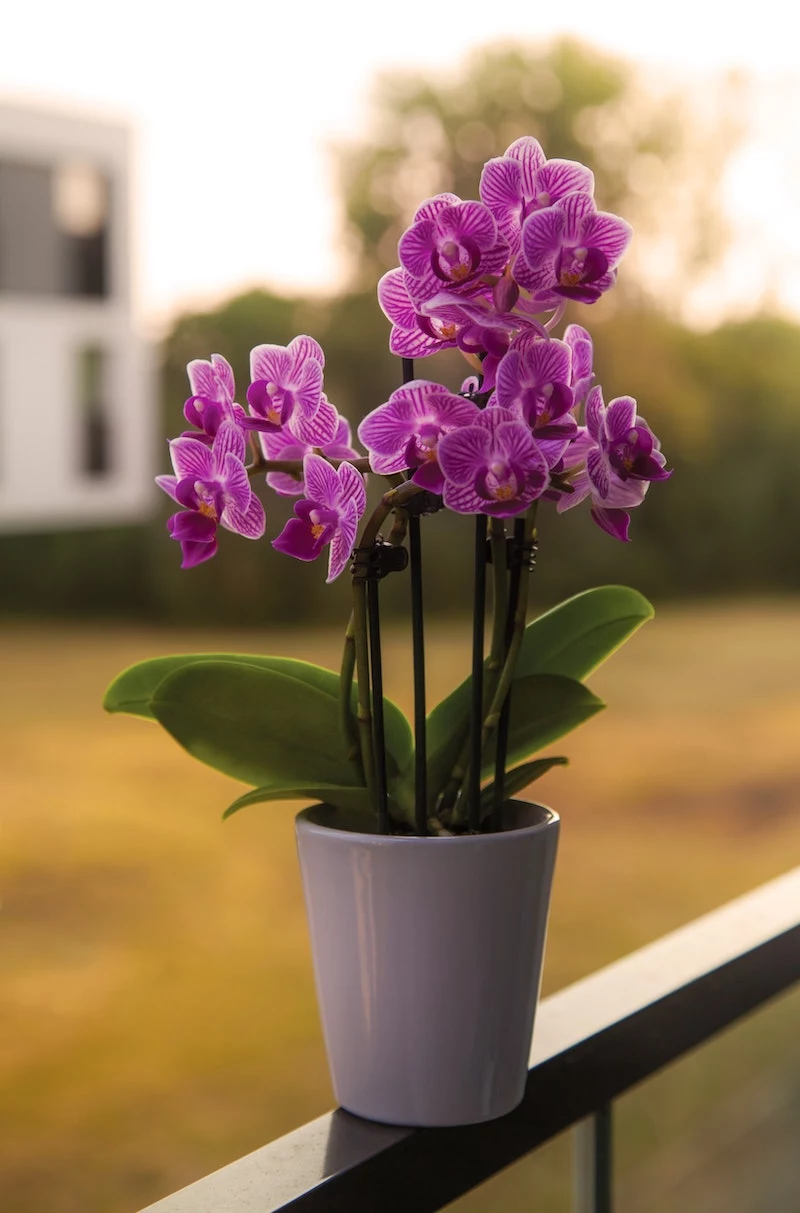
The best way to water is the soaking method:
- Place the entire pot in a sink or a bucket.
- Fill it with room-temperature water up to the rim of the pot and let it soak for 15-20 minutes. This fully hydrates the bark and the root’s velamen.
- Lift the pot out and let it drain COMPLETELY for at least 5-10 minutes. It’s critical that no water is left sitting in the decorative outer pot or saucer. That standing water is the fast track to root rot.
By the way, orchids can be sensitive to hard tap water. If you notice a white crust building up on the bark, those are mineral salts that can burn the root tips. If your water is very hard, consider using rainwater or distilled water. Even using water from a simple Brita filter can help. At least once a month, give it a good flush by just running plain water through the pot for a minute to wash away any of that buildup.
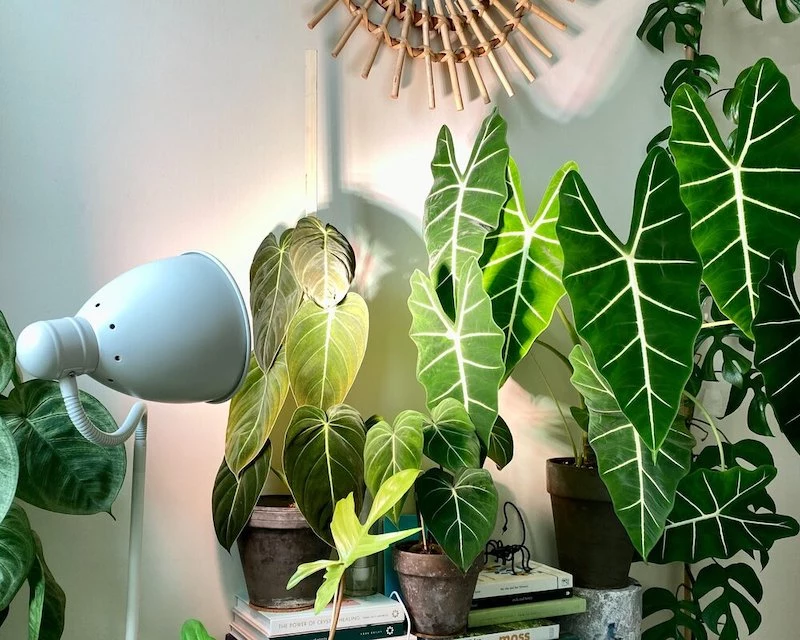
Let There Be Light (But Not Too Much)
When you hear “bright, indirect light,” what does that even mean? Think of it this way: find a spot in your home where you could comfortably read a book during the day without turning on a lamp, but where the sun’s rays aren’t directly hitting the leaves. That’s your sweet spot. An east-facing window is often perfect, giving the plant gentle morning sun but protecting it from the harsh afternoon glare.
Feeding for Flowers, Not Just Leaves
Orchids aren’t heavy feeders, but they need a little boost to produce those amazing flowers. The rule I teach everyone is “weakly, weekly.” This means you fertilize with a very diluted solution, but you do it frequently during the growing season (spring and summer).
Use a balanced liquid fertilizer (like 20-20-20) diluted to one-quarter of the strength recommended on the package. I just add this to the water during my weekly soak. When fall rolls around, it’s a good idea to switch to a “bloom booster” fertilizer, which has a higher phosphorus number (the ‘P’ in N-P-K), like a 10-30-20 formula. Phosphorus is a key ingredient for making flowers.
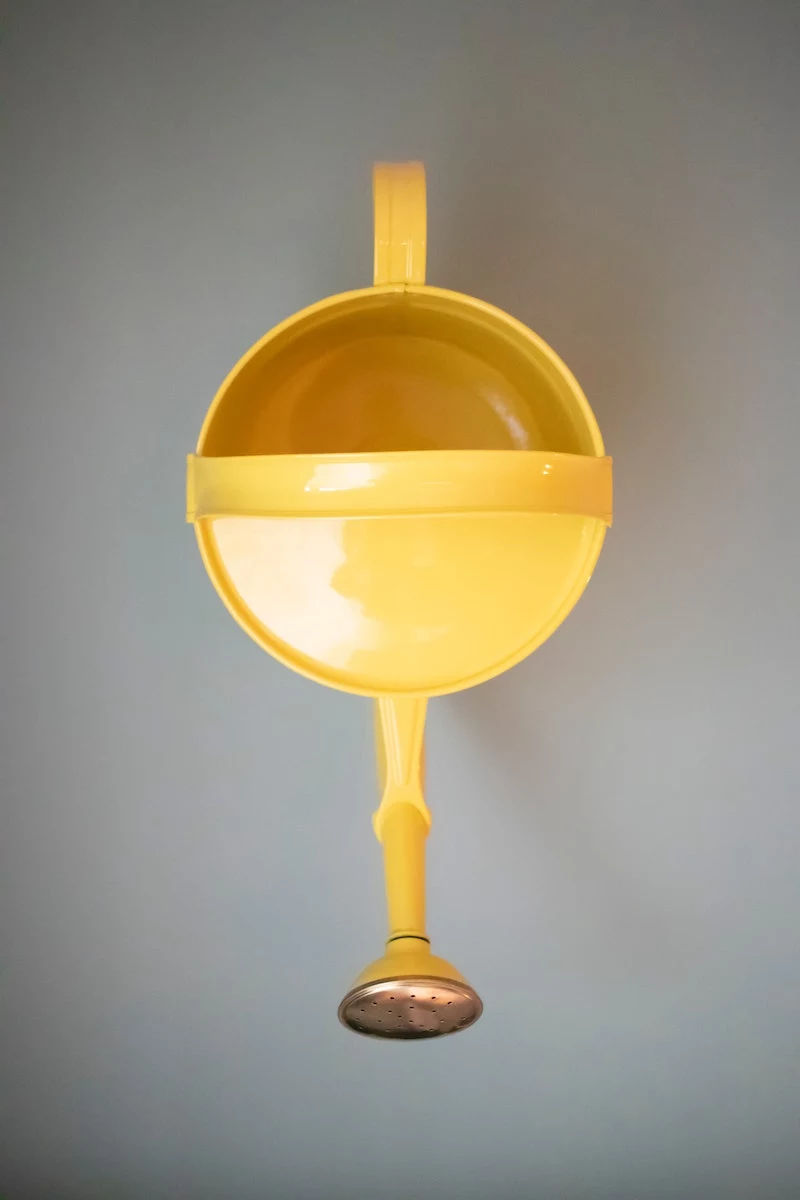
Heads up! Never, ever fertilize a bone-dry orchid. The roots will absorb the fertilizer salts too quickly and get a chemical burn. Always water it first, or just include the diluted fertilizer as part of the soaking method. If you see root tips turning black after feeding, you used too much—flush the pot with plain water immediately.
The Blooming Trigger: A Simple Temperature Trick
For moth orchids, the main signal to start growing a flower spike is a consistent drop in nighttime temperature. You just need to replicate the end of the rainy season. For about two to four weeks in the fall, your plant needs to experience nighttime temps that are about 10-15°F cooler than the daytime high.
This is usually easier than it sounds. Moving the plant from your warm living room to a cooler spare room or a north-facing windowsill at night can be enough. Once you see that little mitten-shaped nub of a flower spike starting to emerge, the job is done. You can move the plant back to its normal spot.

Troubleshooting: What Your Orchid is Trying to Tell You
Even when you do everything right, sometimes things go sideways. Here’s how to decode the most common problems.
Problem: The Leaves are Floppy and Leathery!
Okay, this is the one that gets everybody. Floppy leaves mean the plant is thirsty. BUT… this is the important part… it could be thirsty for two opposite reasons. It could be that you’re underwatering (an easy fix!). Or, it could be that you’ve overwatered, the roots have rotted, and now they can’t absorb any water at all. Dead roots can’t drink. To find out which it is, you have to look at the roots. If they are silvery and firm, you just need to water it. If they are brown and mushy, you’ve got root rot and need to repot immediately, trimming off all the dead tissue.
Problem: My Orchid Looks Healthy But Won’t Bloom!
So you’ve got lush green leaves, a strong root system… but no flowers. What gives? Usually, it’s one of two things. First, check the light. A leaf that is a very dark, forest green is often a sign of not quite enough light to trigger a bloom. A healthy, happy leaf should be a brighter, grassy green. Second, it almost always comes back to that temperature drop. If your home’s temperature is super stable, the plant never gets the signal. Be more intentional about giving it that 2-4 week cool-down in the fall.
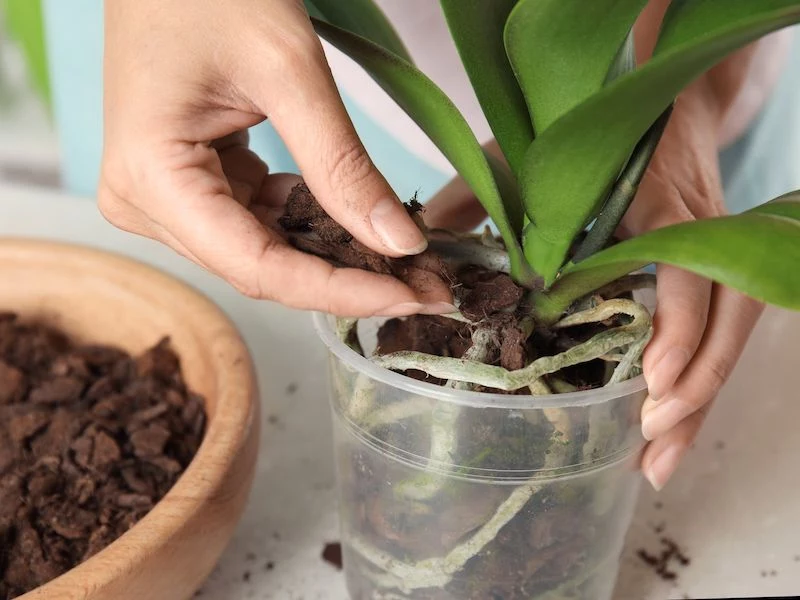
Problem: The Flowers Faded. Now What?
Once the last flower falls, you have two choices for the old flower spike. For most plants, especially younger ones, I recommend cutting the spike all the way down to the base. This sends all the plant’s energy into growing stronger roots and leaves, which means a bigger, better flower show next year. The other option, for a really strong and mature plant, is to cut the spike back to just above one of the little triangular nodes you see on the stem. It might send out a new, smaller branch of flowers, but it’s a bit of a gamble and can weaken the plant.
Problem: I See Little White Fuzzy Things!
Ugh, pests. The most common are mealybugs (the white fuzzy spots) and scale (hard brown bumps). Your first line of defense is a cotton swab dipped in that 70% isopropyl alcohol you bought. Just touch it to the pest, and the alcohol will dissolve its protective coating. For a bigger infestation, you may need insecticidal soap. And whatever you do, isolate an infested plant immediately to keep the pests from spreading!
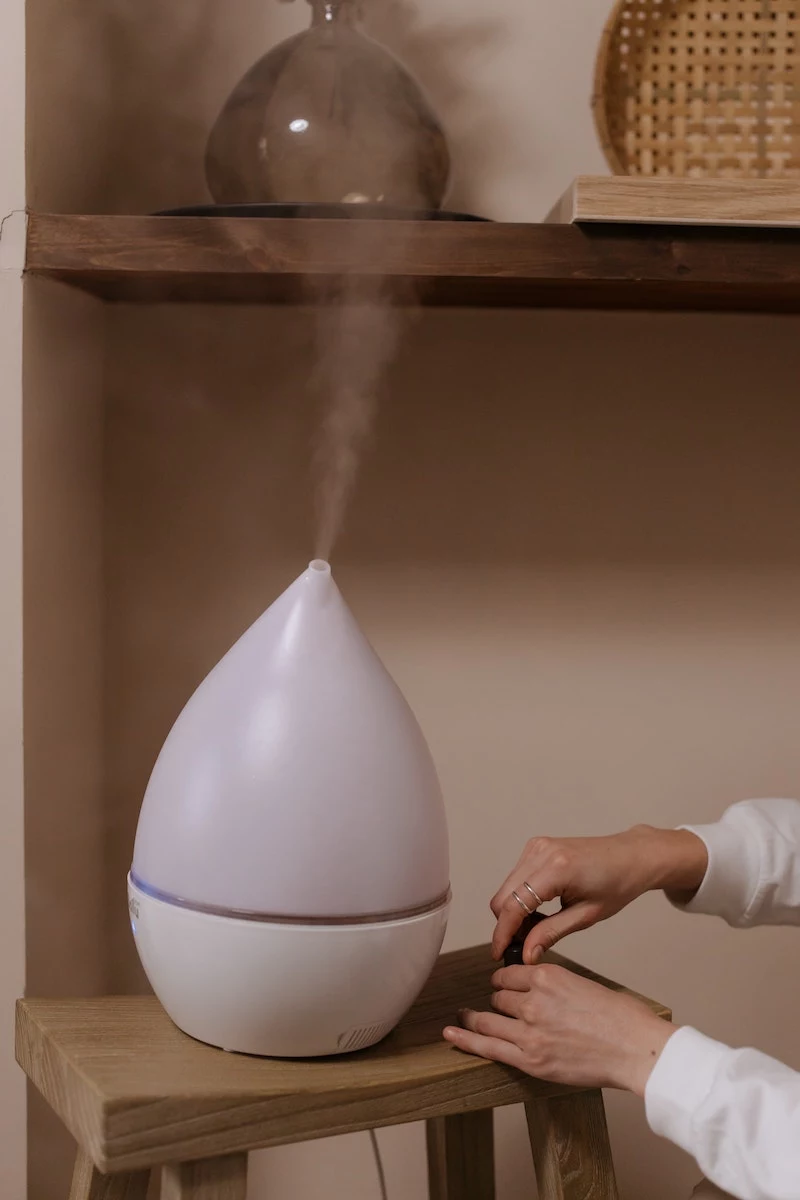
A Final Thought on Patience
Honestly, growing orchids taught me patience more than anything else. They operate on a much slower timeline than we do. A new leaf takes months to grow. A flower spike is a slow, beautiful journey. Don’t get discouraged by mistakes—every single expert grower has a closet full of them. Each one is just a lesson. When you finally see that new spike emerge, you’ll know it wasn’t luck. It was you, listening to your plant. And that’s a seriously satisfying feeling.
Inspirational Gallery
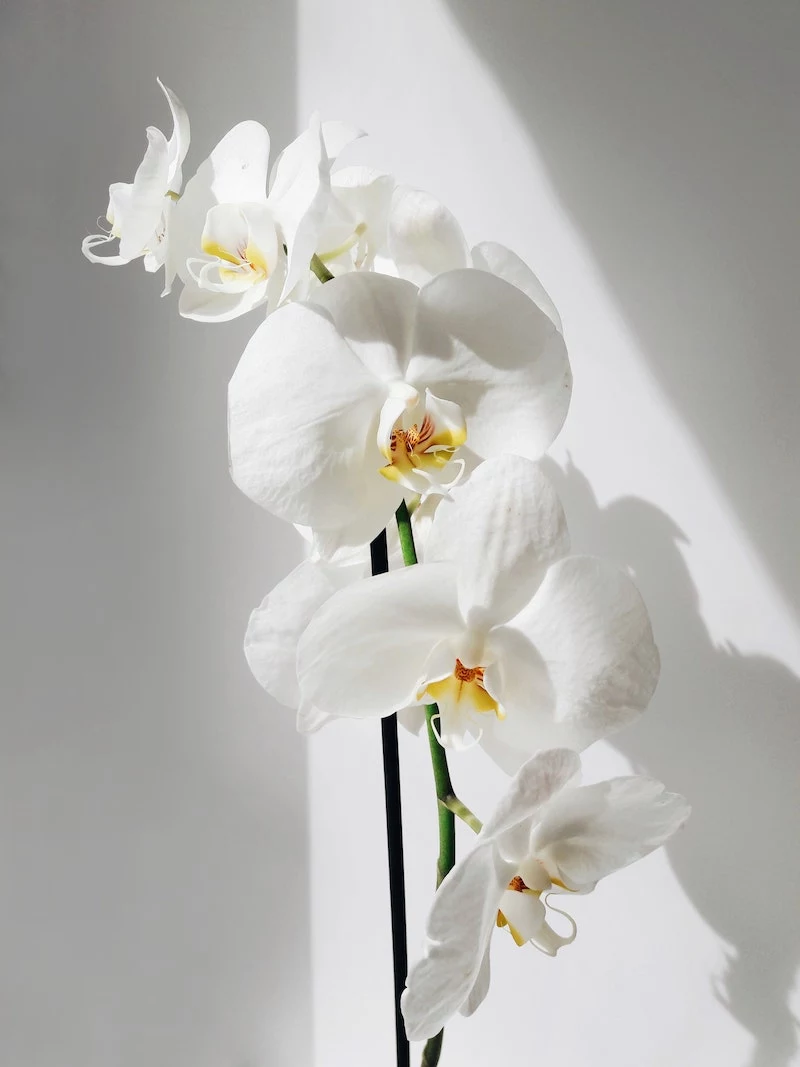
Did you know that in their natural habitat, most common household orchids (Phalaenopsis) are epiphytes? This means they grow on other trees, not in soil. Their roots are exposed to air and intermittent rain.
This is why traditional potting soil is a death sentence for them. The dense, water-retentive soil suffocates the roots, leading to the dreaded root rot. A chunky bark mix, like the ones from Better-Gro or rePotme.com, mimics their natural environment by allowing air to circulate freely around the roots even after a thorough watering.










